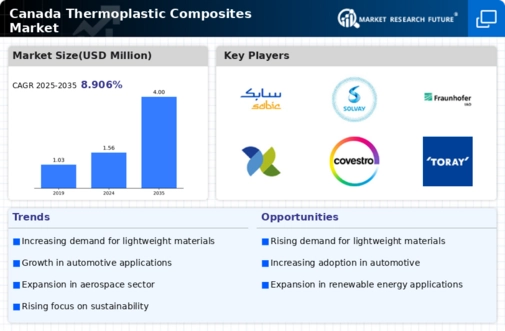A dynamic interplay of innovation, strategic collaborations, and evolving customer demands characterize the competitive landscape of the Canada Thermoplastic Composites Market. As industries such as automotive, aerospace, and construction increasingly adopt lightweight and durable materials, thermoplastic composites are gaining traction due to their advantageous properties. The market is influenced by various factors including technological advancements, sustainability trends, and regulatory frameworks that promote the adoption of advanced materials. Companies are leveraging research and development to enhance the performance characteristics of thermoplastic composites and to develop new applications.
Competitive insights reveal a strong emphasis on partnerships and mergers within the sector, aiming to strengthen product portfolios and gain a competitive edge in this expanding market.
SABIC has established a formidable presence in the Canada Thermoplastic Composites Market through its commitment to innovation and quality. The company leverages its extensive research capabilities and technical expertise to develop high-performance thermoplastic composites tailored to meet specific industry requirements. SABIC's strength lies in its robust supply chain, allowing for efficient distribution and responsiveness to market needs. The firm has garnered recognition for producing lightweight materials that enhance performance and efficiency, particularly in the automotive sector where weight reduction is crucial for fuel efficiency.
Their ability to provide customized solutions, alongside a focus on sustainability, positions them as a leader in the Canadian market, catering to the growing demand for composite materials that support environmental goals.
Arkema is positioned as a key player in the Canada Thermoplastic Composites Market, known for its innovative approaches and diverse product offerings. The company's portfolio includes a range of high-performance thermoplastic composites that cater to various applications, such as automotive, aerospace, and industrial markets. Arkema's strengths include its advanced material science expertise, which enables the development of composite solutions with enhanced mechanical properties and thermal stability. The company has actively pursued strategic mergers and acquisitions to expand its capabilities and market reach in Canada, fostering growth and innovation.
Through continuous investment in RD, Arkema is focused on delivering solutions that meet the demands of the evolving market landscape, thereby solidifying its competitive advantage in the thermoplastic composites sector across Canada.






















Leave a Comment